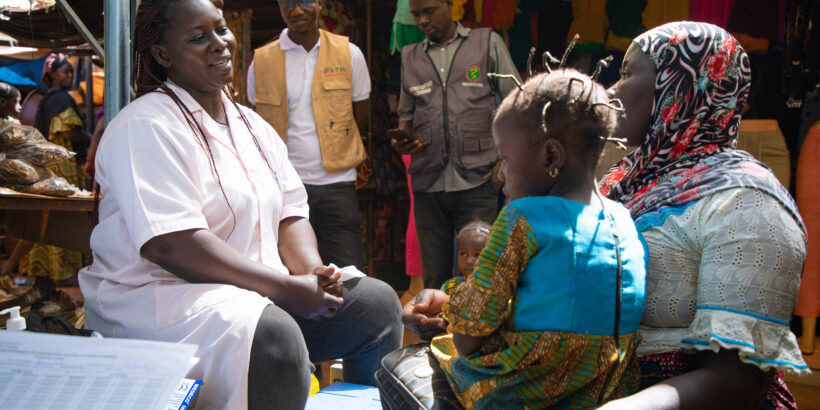Drug resistance, also known as antimicrobial resistance, occurs when bacteria, viruses, fungi, and parasites evolve to resist medications that once effectively treated them. This makes infections harder and more expensive to treat and increases the risk of disease outbreaks, severe illness, and death.
While typhoid can be treated with antibiotics, drug-resistant typhoid is an increasing threat for typhoid-endemic countries. Rates of multi-drug-resistant (MDR) typhoid and extensively drug-resistant (XDR) typhoid are increasing, raising the urgency for disease prevention with interventions like typhoid conjugate vaccines (TCVs) and water, sanitation, and hygiene (WASH). Below, we outline three things to know about typhoid and drug resistance.
1. More than 3 million children lost their lives due to drug-resistant infections in 2022.
In 2022 alone, more than 3 million children worldwide died of complications associated with drug resistance, including an estimated 752,000 children in Southeast Asia and 659,000 children in Africa. In both these regions, the use of Watch antibiotics (drugs with a high risk of resistance) and Reserve antibiotics (last-resort treatments for severe, multidrug-resistant infections) increased from 2019 to 2022. The sharp rise in the use of these drugs, while often necessary to treat drug-resistant infections, poses serious long-term risks of increasing resistance and limiting future treatment options.
The research highlights the urgent need to protect children, who are especially vulnerable to infections, from drug resistance—particularly in high-burden regions like Southeast Asia and Africa. Vaccines are one way to protect against drug resistance: they prevent infections, build herd immunity, and reduce the need for treatment, leading to fewer opportunities for diseases to develop resistance to drugs.
2. The burden of drug resistance is high in low- and middle-income countries (LMICs).
A 2024 modeling study from the Global Research on Antimicrobial Resistance Project, a partnership between the University of Oxford and the Institute for Health Metrics and Evaluation at the University of Washington, underscored the high burden of drug resistance in LMICs. Factors such as overcrowded hospitals, poor sanitation, and weak infection prevention measures can lead to greater spread of resistant pathogens in LMICs. LMICs also often face a lack of diagnostic tools, which can lead to misdiagnosis and contribute to overuse and misuse of antibiotics.
The findings showed that drug resistance is affecting many communities in LMICs where typhoid is endemic. Rates of MDR typhoid have increased rapidly since it emerged in the 1970s, accounting for more than 50% of all typhoid infections in 2019. Even newer antibiotics that were once effective against typhoid are now becoming less effective, and the emergence of XDR typhoid suggests that current antibiotics may not be able to successfully treat typhoid for much longer.
3. Typhoid conjugate vaccines can make a difference in the fight against drug resistance.
Drug resistance is a serious threat to child health worldwide—but vaccines are a powerful preventive tool. Data show that vaccines have the potential to avert half a million deaths associated with drug resistance annually.
TCVs are safe and effective against typhoid, including drug-resistant strains. Research from Pakistan found TCV to be 97% effective against XDR typhoid. Expanding coverage of TCVs through routine immunization can slow the emergence and transmission of drug-resistant typhoid strains and lower the need for antibiotics.
Taking on drug resistance
Drug resistance is a global problem—one that imposes significant costs on health systems and economies worldwide. Taking on drug resistance, including drug-resistant typhoid, requires coordination at regional and global levels to prevent infections, reduce overuse and misuse of antibiotics, and create effective national surveillance and antibiotic stewardship programs.
TCVs and WASH are critical tools to prevent infections and stop the spread of drug-resistant typhoid strains in typhoid-endemic regions. Preliminary data from Pakistan also show that TCVs have exciting potential to reduce typhoid-specific antibiotic use. By working to expand access to this powerful intervention, we can protect more children from typhoid and save lives.
Cover photo: An immunization campaign worker speaks to a caregiver during Burkina Faso’s TCV introduction in 2025. Credit: TyVAC/Build Africa Communications



